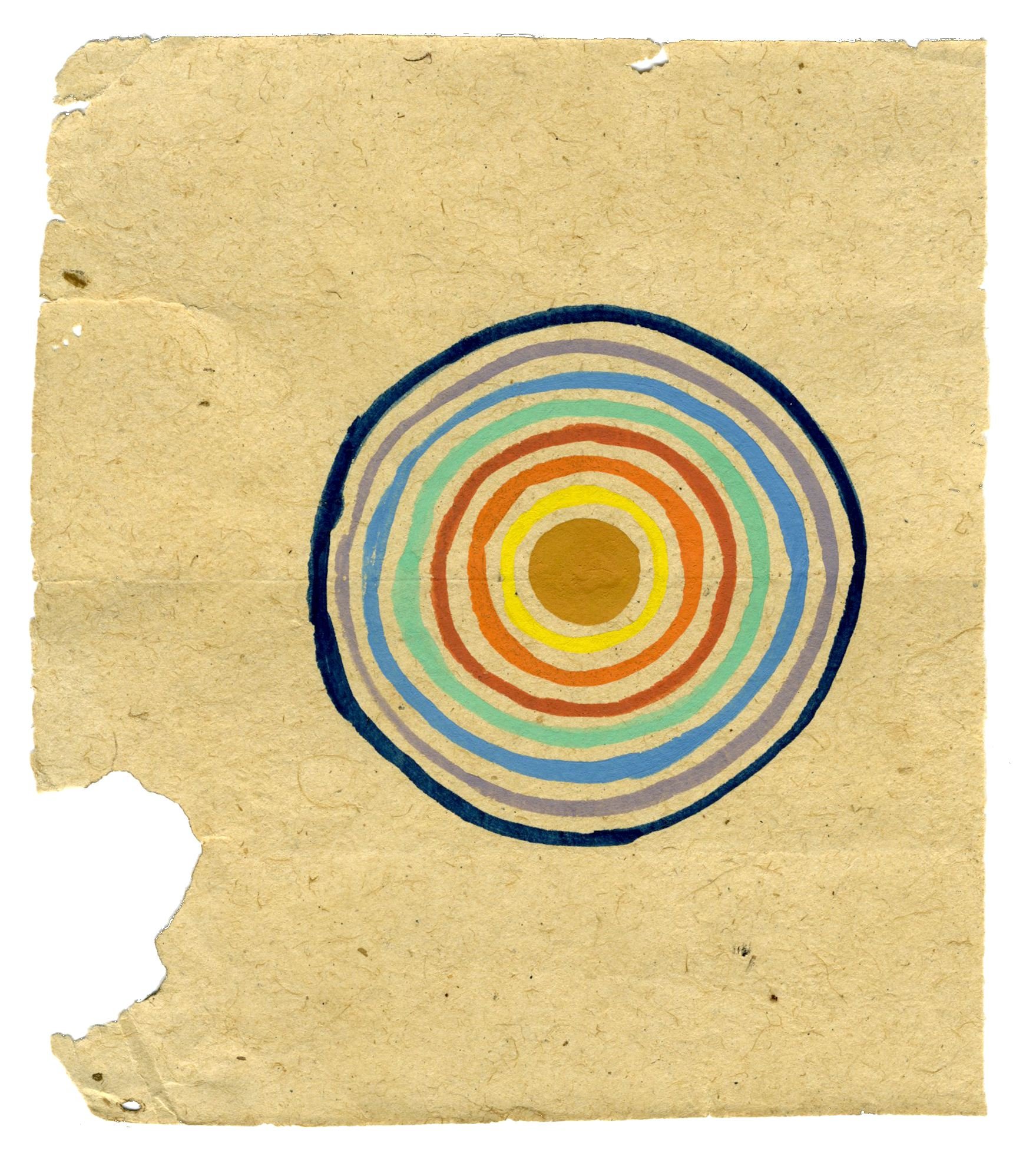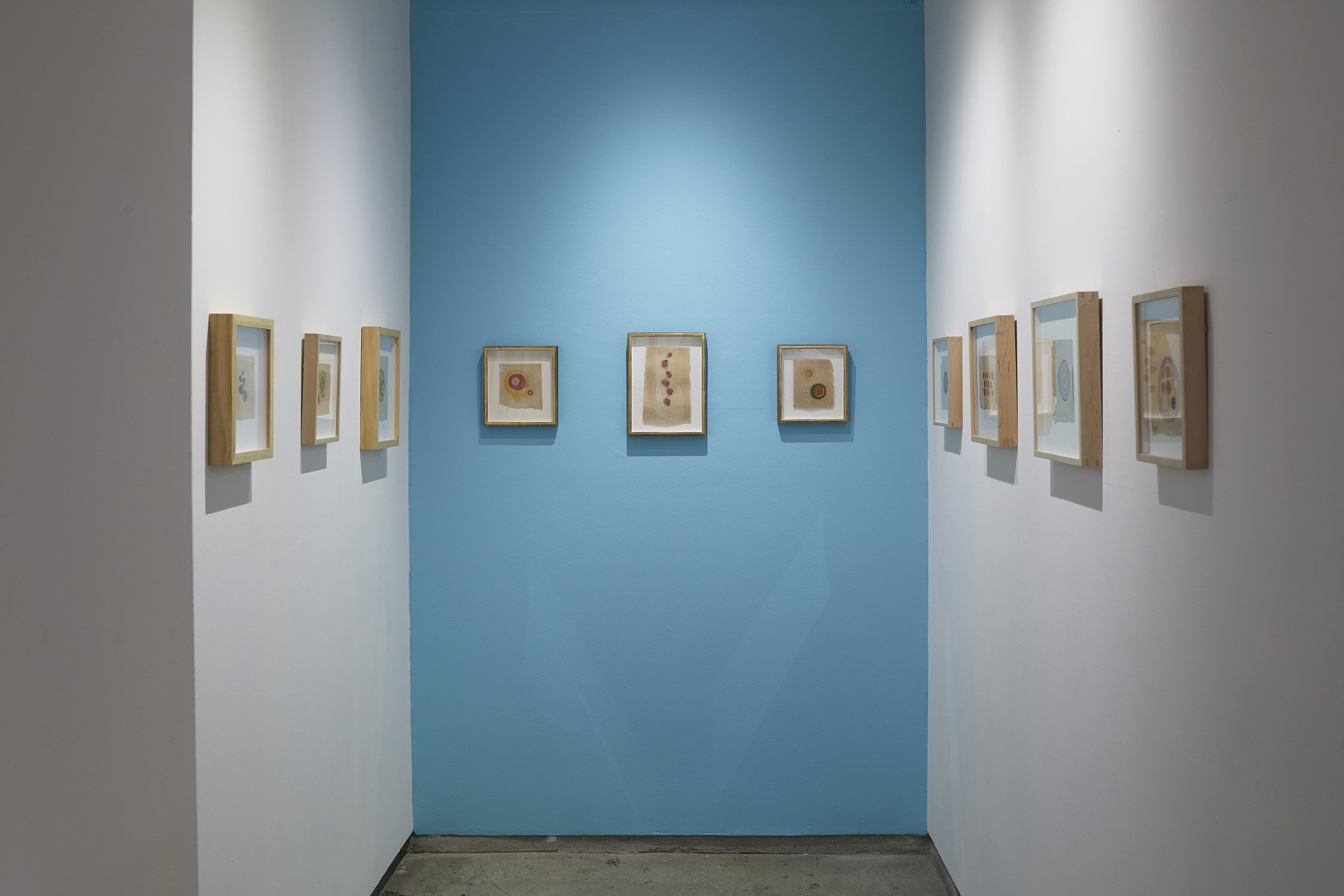
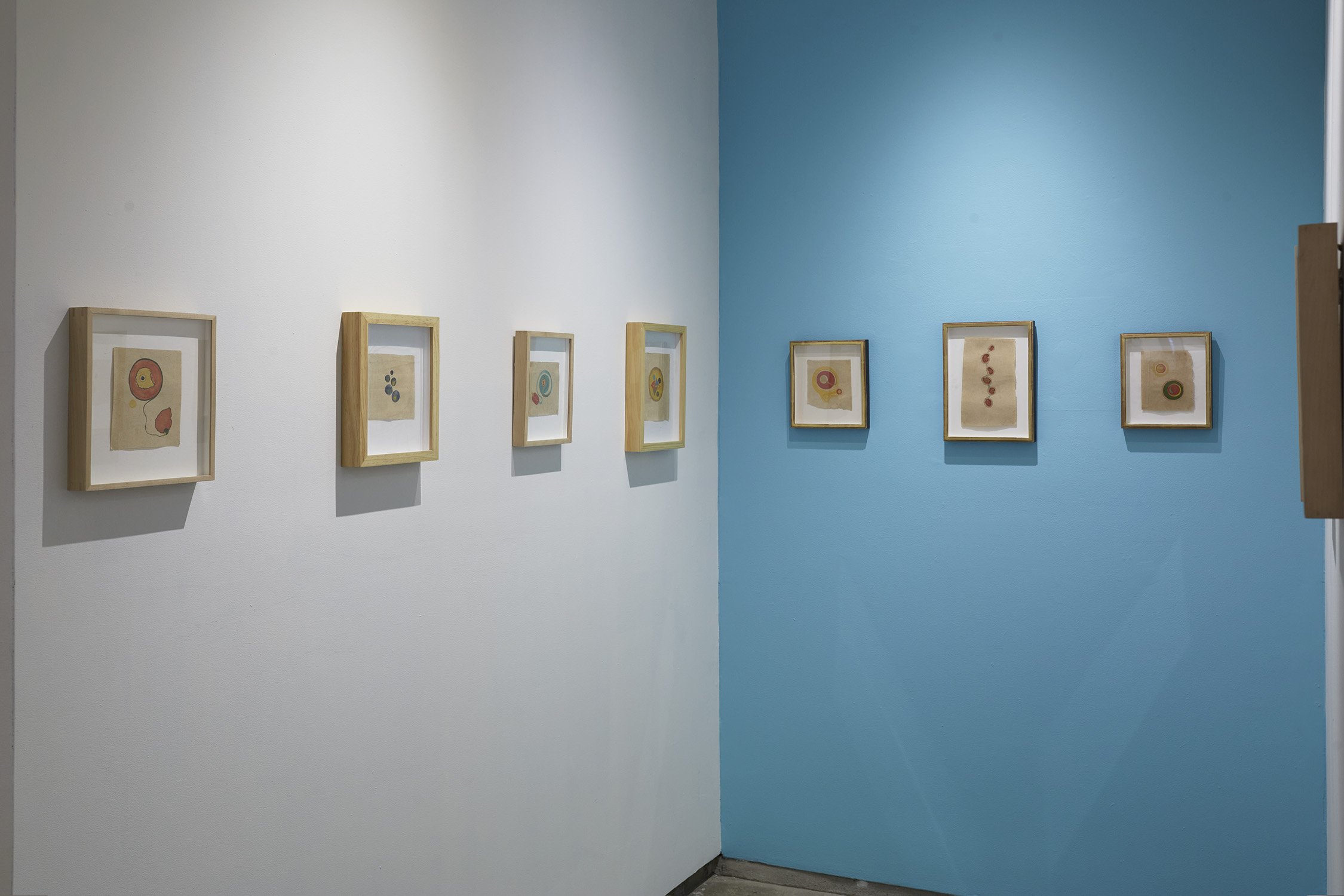
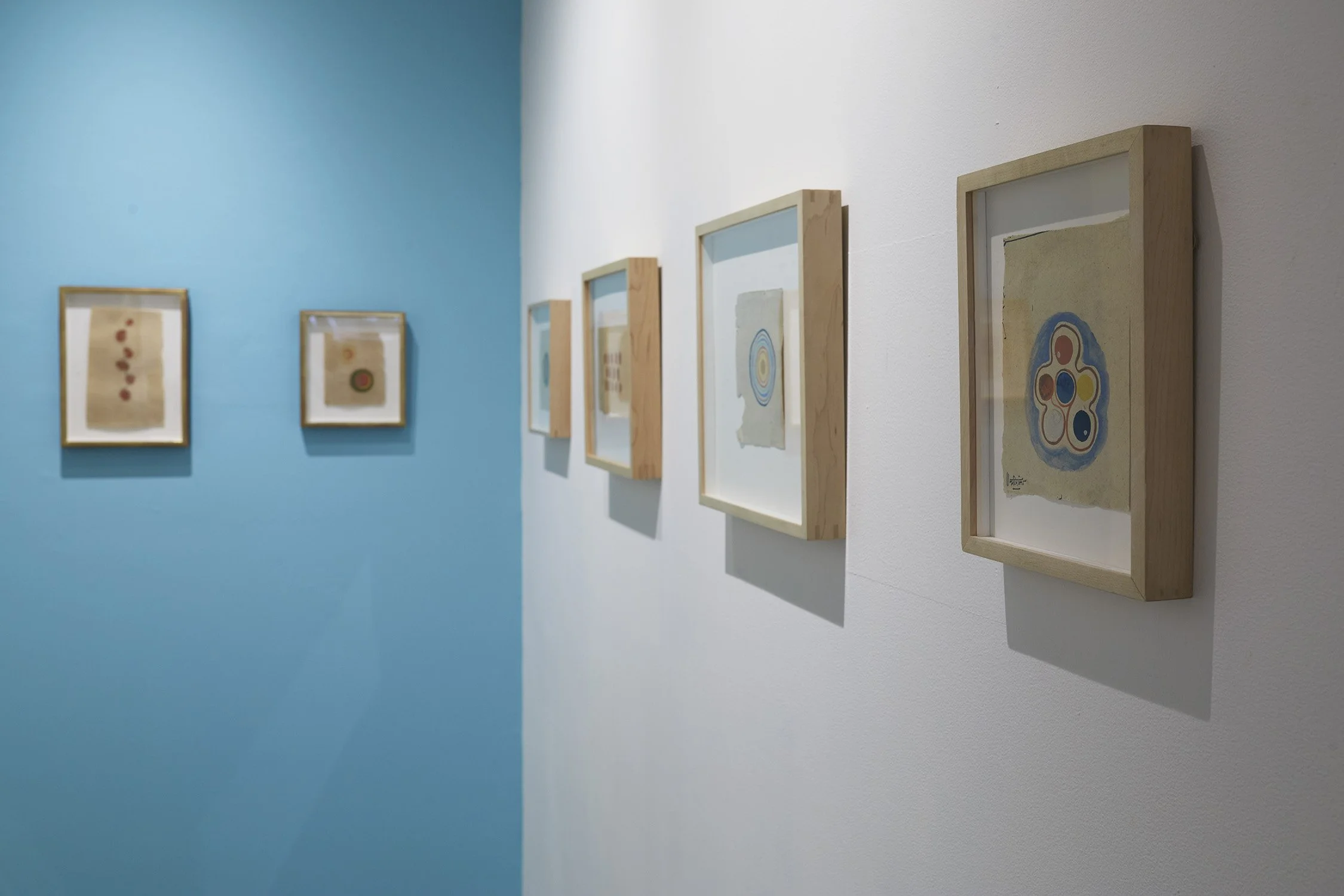
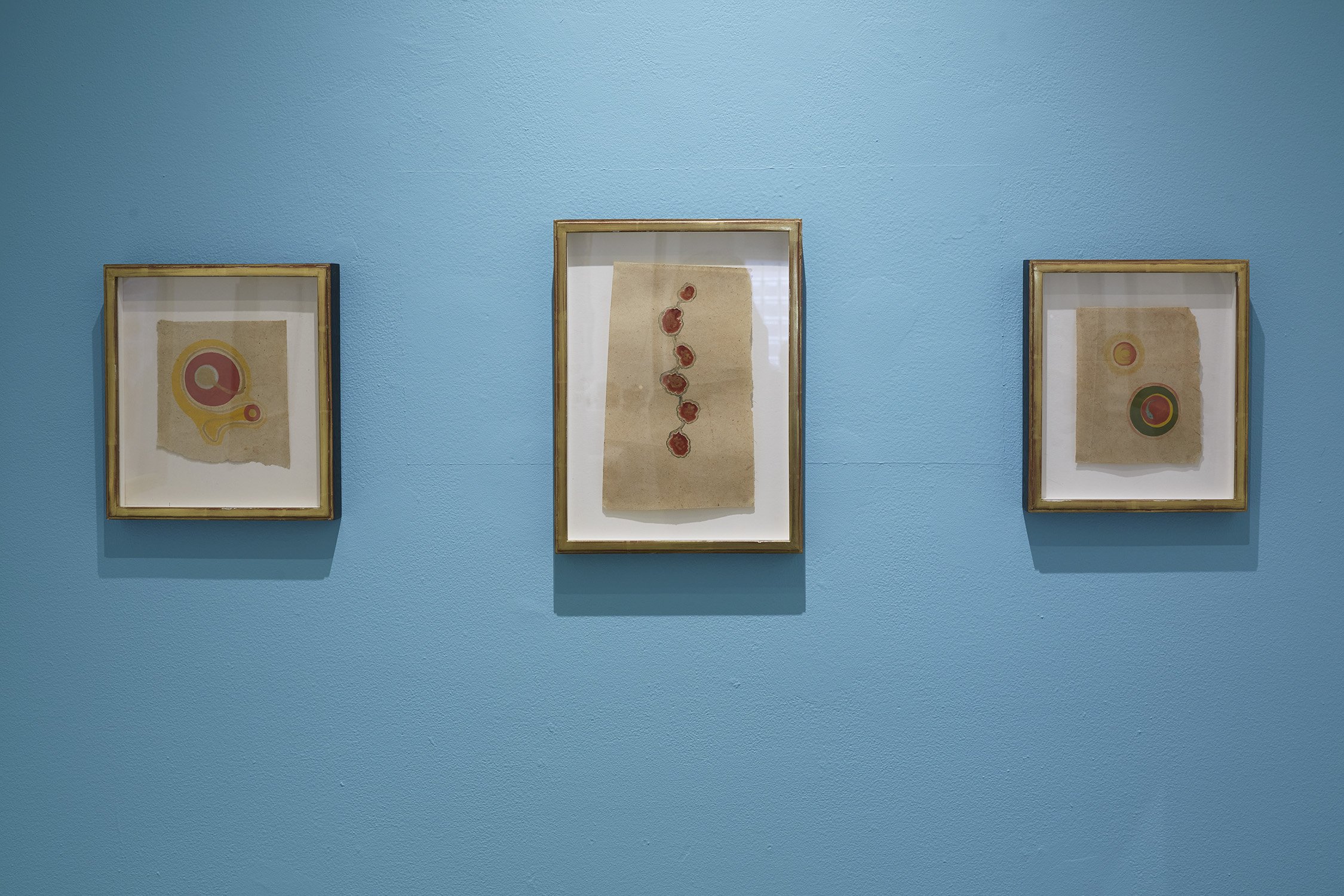

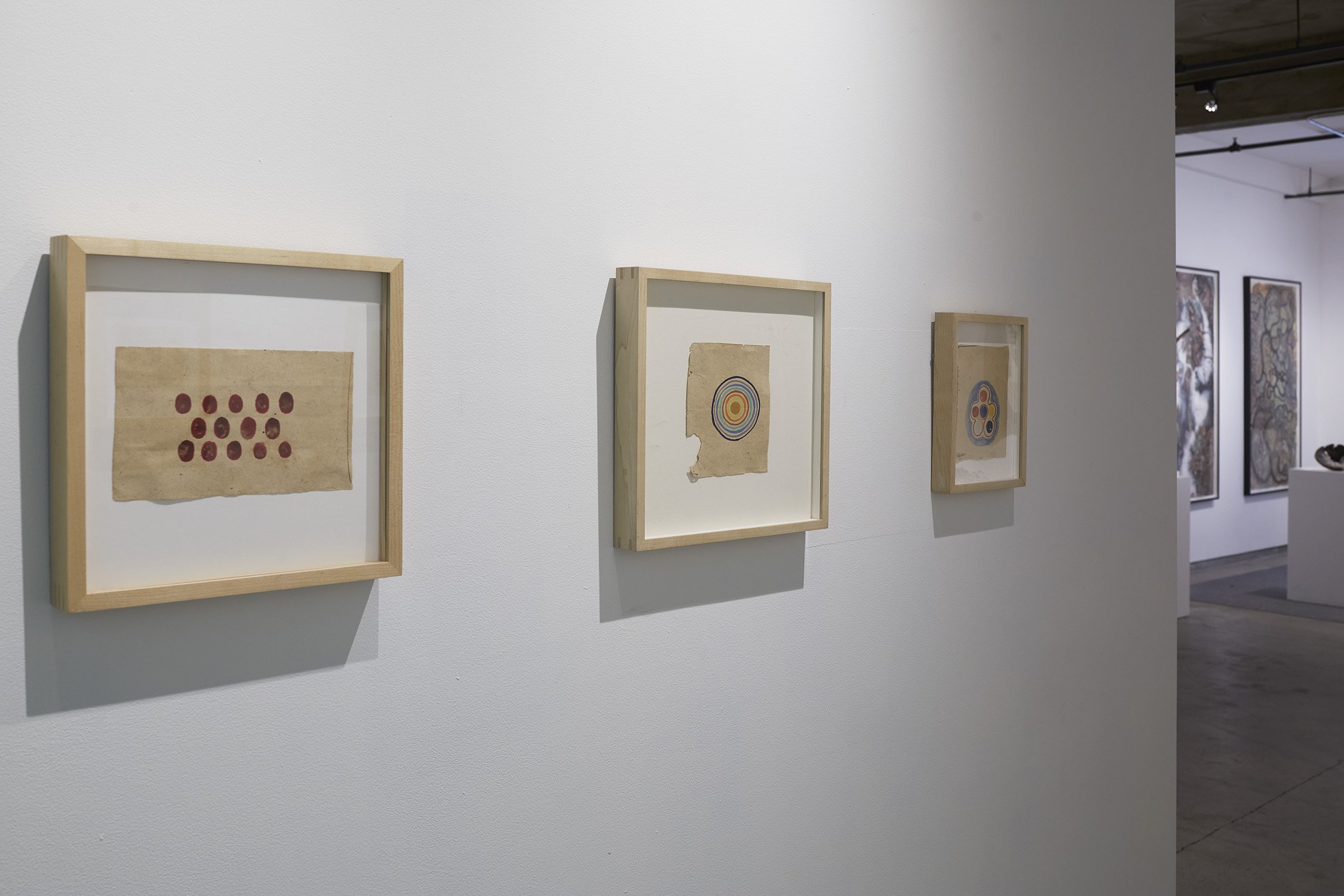
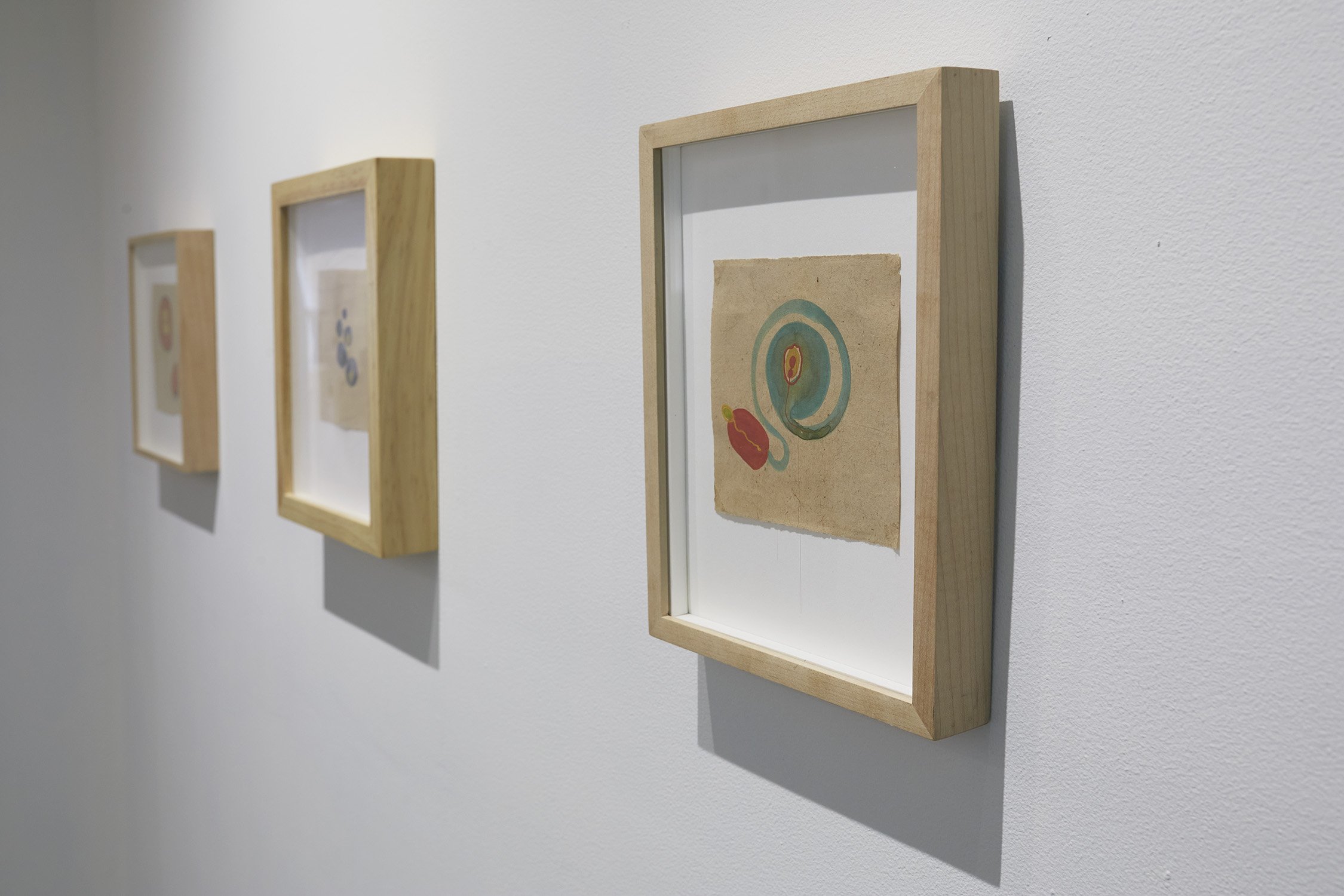
TANTRA
(April 2 - May 7, 2022)
These anonymous small paintings come from a tradition in Tantric Hinduism, which began in the fifth or sixth century C.E. After painting one, a devotee is to meditate on an image to manifest the divinity. It is a practice that involves a separation from one’s ego. In Sanskrit tantra means “loom” or “weave,” but also “treatise.” The hand-written Tantra treatises date back at least to the seventeenth century, as do the paintings. The Tantra treatises and paintings have been copied over many generations. The accompanying symbolic paintings evolved with the treatises. Now many of them have been separated from the original treatises.
The Tantric philosophy does not separate spiritual, ascetic practices from the mundane experiences of daily life. A Tantrika, or practitioner of Tantra, is not expected to live a hermetic existence away from the pleasure and pain of the world. The continuum of ordinary life can provide true and ever-lasting fulfillment only when all the threads are woven according to the pattern designated by Nature. When we are born, life naturally forms itself around that pattern. But as we grow, our ignorance, desire, attachment, fear, and false images of others and ourselves tangle and tear the threads, disfiguring the fabric. Tantra practice reweaves the fabric, and restores the grace of the original pattern.
When a practitioner meditates, the meditator may repeat a continuous pattern of words or sounds, either silently or audibly, known as a Mantra. Yantra is the Sanskrit word for mystical diagram, or a visual Mantra.
Tantric visualizations are said to bring the meditator to the core of their humanity and unity by transcendence. The transcendence reached by meditative work does not construct anything in the mind of the practitioner; instead, it deconstructs all preconceived notions of the human condition. The limits on thought (cultural and linguistic frameworks) are removed. This allows the person to experience liberation, followed by unity with spiritual reality.
It is very common, and totally within the tradition for artists to make yantras on recycled paper--and to create them anonymously, as humility is part of Tantra practice. Most of these paintings (historical and contemporary) are made by artists trained to copy Indian miniatures, an acceptable, respected occupation in India. The makers tend to be from the Rajasthan area of India. While a skilled copyist may be able to capture pattern and color, it takes the touch of artist to capture the energy and luminosity associated with the best of the paintings.
The anonymous creators of the small Yantra, or mystical diagrams in this catalog were also trained as a copyist of traditional Indian miniatures. Choosing to remain anonymous in the spiritual act of making the paintings, they use vintage paper, and hand-ground colors including minerals, mother-of-pearl, coral, tree resin, vegetal pastes, and silver and or gold leaf. Anonymous paintings such as these have been exhibited at the Venice Biennale in 2013; The Drawing Center, New York, in 2005-6; Agnes B’s Galerie de Jour, Paris, 1994; and Galerie Le Point Cardinal, Paris, 1970, organized by Octavio Paz.
We are indebted to the poetic writings of French poet Franck André Jamme, and have paraphrased him extensively in this short essay, and to the scholarly writing of Ajit Mookerjee for historical information.
Bibliography
Tantra Song: Tantric Painting from Rajastan, Franck André Jamme, Siglio, Los Angeles, 2011
Field of Color: Tantra Drawings From India, the Drawing Center, NY, 2004, with essay by Franck André Jamme
Vyakul, Franck André Jamme, Galerie de Jour, Paris, 1993
Magiciens de la Terre, organized by Jean-Hubert Martin, Centre Georges Pompidou, Paris, 1989
Tantra Art, Ajit Mookerjee, Landmark Book Company, NY, 1983
The Tantric Way, Ajit Mookerjee, and Madhu Khanna, Thames and Hudson, London, 1977




